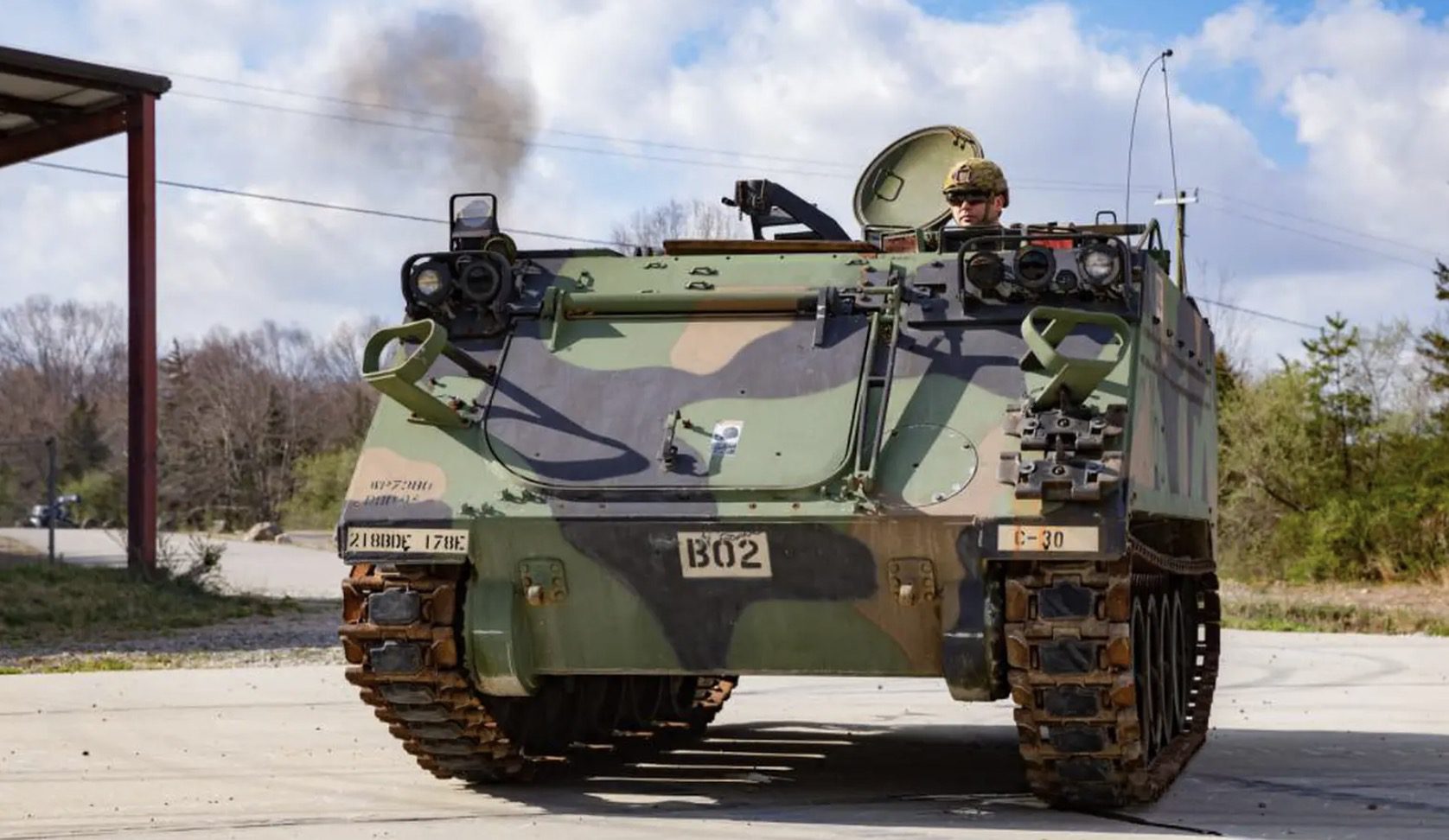
This story originally was published by Real Clear Wire
By Gary Anderson
Real Clear Wire
Since 2020, the nation’s military has undergone one of the most humiliating periods in its history. The disgraceful rout at Hamid Karzai International airport during the Afghanistan withdrawal. Soon after, the decrepit state of naval maintenance and shipbuilding is the worst since the Navy’s founding.
Further compounding the humiliation, the Marine Corps has been castrated into a regional force whose legendary force in readiness is being replaced by a combination of colonial light infantry and coastal defense artillery.
The tragic decline of our nation’s armed forces coincides with the greatest recruiting crisis that our Army has suffered since the activation of the all-volunteer force in the 1970s.
We are now experiencing the greatest decline in American combat power since the end of World War II. America’s military is becoming a hollow force not seen since the Carter years.
The Department of Defense appears incapable of reversing the devastating decline in combat power, all while President Bidne and his administration tout our Military as the most powerful in the world.
The seeds for an even greater debacle have been sewn. Unless there is a significant course correction disaster looms over the horizon. The necessary course correction should be the job of Congress.
Starting with the Navy, as this is written, we have only two aircraft carriers deployed globally, with both anchored in the Middle East for what could become a global crisis. Despite the chest pounding over the Chinese threat, the Navy’s Indo-Pacific presence is akin to the emperor without clothes.
This lack of power projection necessary to deter potential adversaries like China is due to the abysmal state of the U.S. shipbuilding along with incompetence and corruption among the senior naval officers charged with the Navy’s maintenance and repair. Most naval personnel I know, officer and enlisted, believe it is only the tip of the iceberg.
So, what can Congress do? An investigation into incestuous relationship between senior naval personnel and the shipbuilding industry and their contractors, often staffed with senior retired sailors would be a good start. Congress also needs new rules to address the army of senior retired military leaders working for defense contractors.
The Navy’s current crisis didn’t just happen during the Biden administration. It simply reached an inflection point after decades of neglect.
We have allowed our maritime industrial base to deteriorate since the end of the Cold War. To get back on course to achieve the requisite level of sea power our Navy requires will take decades.
Congress must consider outsourcing already backlogged emergency and routine maintenance to allied nations who have excess capacity. This admittedly violates “buy American” pledges, but in this case, America has nothing to sell.
Congress must also address the crisis of military recruiting. Namely, the Army’s crisis in recruiting goes much deeper than the dwindling manpower base caused by poor public education, drug use, and the sedentary lifestyle of the video game generation. Women can only go so far in filling the gap. The cadre of healthy young men from the south and rural areas as well as high school athletes that have traditionally made up the core of the combat arms are staying away in droves.
Perhaps the most troubling aspect of the decline in the military recruiting pool has been the decline in veteran families not recommending service to their children. Approximately eighty percent of the military was comprised of those that had a close family that served in the military. I am one of the many veterans who, if not discouraging military service, are not encouraging young people to pursue it as a career.
Many of us feel that the woke mindset pushing diversity, equity, and inclusion along with critical race theory and other controversial progressive social agendas once relegated to campuses like Columbia and Berkley.
The blame for propagating this progressive social agenda and driving away the traditional recruiting base lays squarely with both the Obama and Biden administrations. Congress must counter the damage done as a recent study at Arizona State University declares “The U.S. Armed Forces should not be a laboratory for social experimentation.” Congress needs to eliminate these social experiments and refocus on the core mission of warfighting and ensuring our nation’s security.
The Marine Corps, however, has staved off the recruiting crisis but can only blame themselves for a striking loss of combat power. Beginning in 2019, then commandant General David Berger radically retooled the Marine Corps from its role as a global force in readiness into a China focused force to help the Navy contesting Chinese aggression in first island chain by placing small Marine Corps units armed with anti-ship missiles on the disputed islets and shoals. The concept known as Force Design 2030, now simply Force Design (FD).
The operational component of FD is Expeditionary Advanced Base Operations (EABO) with tactical missile shooters across an array of islands known as Stand-in Forces (SIF). To augment the SIF will also be the newly formed Marine littoral regiment.
To implement this new, controversial operational concept during a time of constrained defense budgets, General Berger divested the Marine Corps of much of the combat power that made it a potent world-wide combined arms force in readiness. The Marine Corps rid itself of tanks, heavy engineering units, a majority of cannon artillery, a number of aviation assets, and core elements of its infantry including scout snipers.
The monumental divestiture of historic Marine Corps assets to implement this new operational concept was all conceived behind closed doors without input from any previous commandant and a set of war games. The closed series of war games was conducted at the classified level to “validate” the concept and critics, including several analysts involved, have essentially accused the senior leadership of “cooking the books.”
There is a congressionally mandated requirement for a study of the efficacy of Force Design being done by the Center for Naval Analysis, but at this point, it is a work in progress. If that study shows FD/EABO to be ill conceived, Congress should stop all further funding for FD/EABO until the Marine Corps can come up with a viable course correction.
General Eric Smith, the current commandant, was handpicked by Berger and must relinquish his position if the Marine Corps is to restore its lethal force in readiness for the expanding global threats. Smith and Berger recently met with the other eight former commandants who made an impassioned pleas for modification of the FD/EABO/SIF concept to reflect a Marine Corps vision capable of engaging the expanding global threats. However, days later, General Smith issued his Commandant’s planning guidance, doubling down on the FD enterprise.
A recent article in JFQ by Adam Clemens “The Marine Corps the United States Needs” states:
The Marine Corps’ statutory mission—amphibious assault to seize advanced naval bases—is not as relevant as it once was, but it cannot be completely dismissed. The Marine Corps needs a mission or set of missions to ensure its relevance in a 21st-century world in which denied environments will become increasingly common. More important, the Marine Corps cannot simply choose the missions it would like to do and hope that the other services and Congress accept those choices and that our partners and competitors respond to them in a way that improves the competitive position of the United States. The Marine Corps must instead optimize itself to suit the Nation’s needs given the choices made by other actors.
To change course and prepare the Marine Corps for future conflict, Congress must act now. Eight administrations of both parties have lived through the unintended consequences of the Goldwater-Nichols act and bi-partisan solutions are now possible.
It took Vietnam to drive the last great U.S. effort at military reform, we cannot let Afghanistan and related military failure be locked in the attic like a crazy uncle. Like a termite infestation or dry rot, ignoring the problems much longer could lead to a collapse of the whole edifice and our nation’s interests and force in readiness, the Marine Corps, depend on it.
Gary Anderson retired as Chief of Staff of the Marine Corps Warfighting Lab and served as a Special Advisor to the Deputy Secretary of Defense.
This article was originally published by RealClearDefense and made available via RealClearWire.















